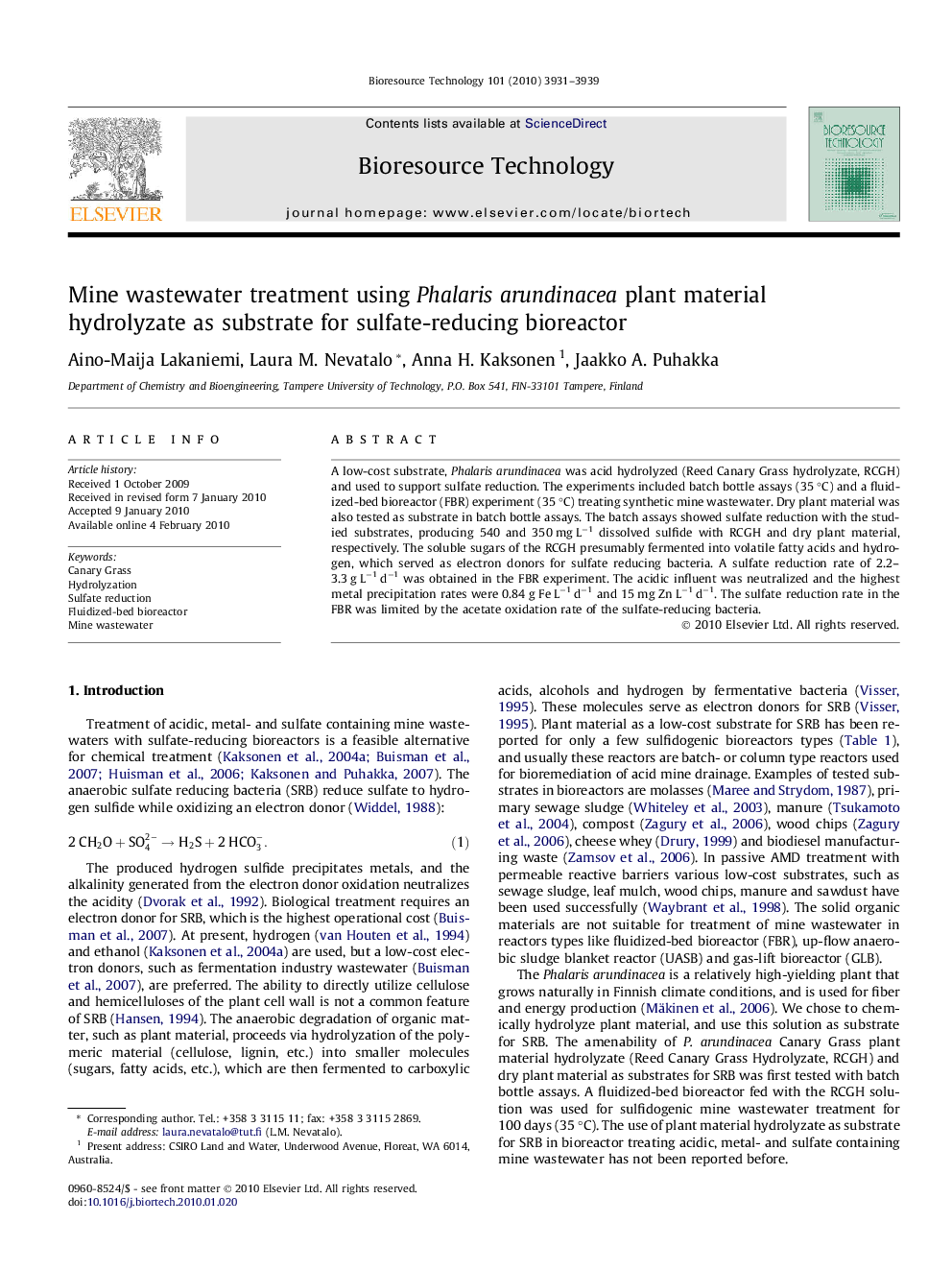| Article ID | Journal | Published Year | Pages | File Type |
|---|---|---|---|---|
| 683540 | Bioresource Technology | 2010 | 9 Pages |
A low-cost substrate, Phalaris arundinacea was acid hydrolyzed (Reed Canary Grass hydrolyzate, RCGH) and used to support sulfate reduction. The experiments included batch bottle assays (35 °C) and a fluidized-bed bioreactor (FBR) experiment (35 °C) treating synthetic mine wastewater. Dry plant material was also tested as substrate in batch bottle assays. The batch assays showed sulfate reduction with the studied substrates, producing 540 and 350 mg L−1 dissolved sulfide with RCGH and dry plant material, respectively. The soluble sugars of the RCGH presumably fermented into volatile fatty acids and hydrogen, which served as electron donors for sulfate reducing bacteria. A sulfate reduction rate of 2.2–3.3 g L−1 d−1 was obtained in the FBR experiment. The acidic influent was neutralized and the highest metal precipitation rates were 0.84 g Fe L−1 d−1 and 15 mg Zn L−1 d−1. The sulfate reduction rate in the FBR was limited by the acetate oxidation rate of the sulfate-reducing bacteria.
